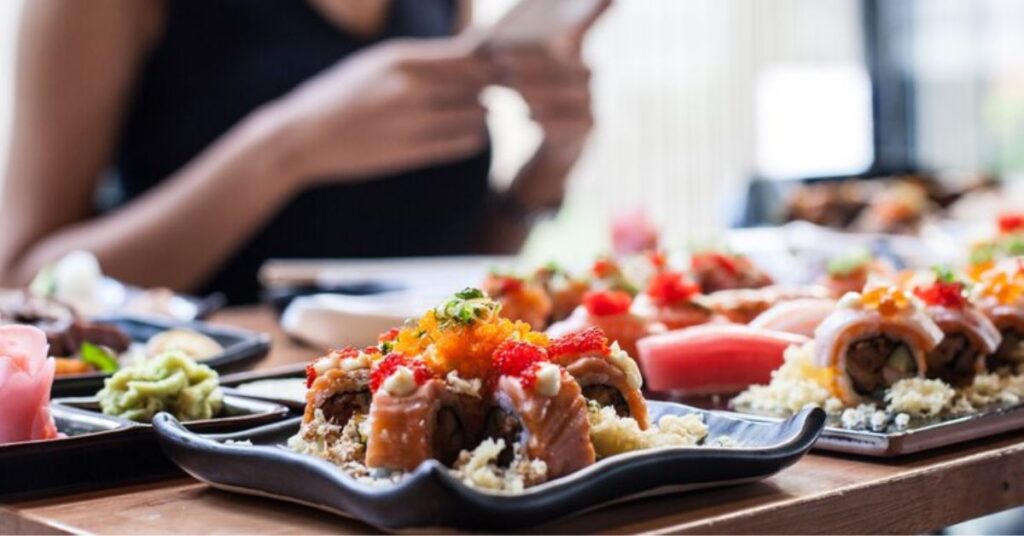If you’re a fan of sushi or seafood delights, chances are you’ve encountered kanikama at some point. Kanikama, also known as imitation crab meat, is a popular ingredient in various cuisines worldwide. But what exactly is kani’kama, and what makes it so intriguing? Let’s dive into the fascinating world of this surimi-based delicacy.
What is Kanikama?
Kanikama is a type of processed seafood made to resemble the taste, texture, and appearance of crab meat. Despite its name, which translates to “crab stick” in Japanese, kani’kama contains no crab at all in its original form. Instead, it is crafted from a paste known as surimi, which is then flavored, shaped, and colored to mimic the qualities of real crab meat.
History of Kani’kama
The origins of kanikama trace back to Japan in the 1970s when seafood manufacturers sought innovative ways to utilize surimi, a paste made from minced fish. Seeking to create an affordable alternative to real crab meat, they developed kani’kama, which quickly gained popularity not only in Japan but also in international markets.
Ingredients Used in Kanikama
The primary ingredient in kani’kama is surimi, typically derived from fish such as Alaskan pollock or Pacific whiting. Other ingredients may include starch, egg whites, sugar, salt, and flavorings like crab extract or artificial crab flavor.
Nutritional Benefits of Kani’kama
Kanikama is a low-calorie, low-fat protein source, making it an attractive option for health-conscious consumers. It provides essential nutrients like protein, omega-3 fatty acids, vitamins, and minerals, contributing to a balanced diet when consumed in moderation.
Culinary Uses of Kanikama
Kanikama is a versatile ingredient used in a variety of dishes, from sushi rolls and salads to soups and sandwiches. Its mild flavor and firm texture make it suitable for both raw and cooked applications, adding a delightful seafood essence to any recipe.
How is Kanikama Made?
The production process of kanikama involves several steps, including mincing fish to create surimi, blending it with other ingredients, shaping the mixture into sticks or chunks, cooking, and finally, packaging for distribution. The result is a convenient and accessible seafood product enjoyed by millions worldwide.
Kanikama vs. Real Crab Meat
While kani’kama may closely resemble real crab meat in appearance, taste, and texture, there are notable differences between the two. Real crab meat offers a more authentic flavor and texture, whereas kanikama tends to be softer and slightly sweeter due to the added ingredients and processing methods.
Health Concerns Surrounding Kanikama
Despite its popularity, kanikama has faced scrutiny regarding its nutritional value and processing methods. Some critics argue that certain additives and preservatives used in its production may pose health risks, although research on this topic remains inconclusive. As with any processed food, moderation is key to enjoying kani’kama safely.
Sustainability of Kanikama Production
The sustainability of kanikama production hinges on responsible fishing practices and the conservation of marine ecosystems. By sourcing fish from well-managed fisheries and implementing eco-friendly production methods, manufacturers can minimize their environmental impact and ensure the long-term viability of kani’kama as a food choice.
Popular Brands of Kanikama
Numerous brands produce kani’kama worldwide, each offering its unique variations in flavor, texture, and packaging. Some well-known brands include Kanimi, Trans-Ocean, and SeaPak, among others, catering to diverse consumer preferences and culinary needs.
Kanikama in Asian Cuisine
In Asian cuisine, kanikama is a staple ingredient in sushi, sashimi, and various seafood dishes. Its versatility and affordability make it a favorite among home cooks and professional chefs alike, adding a touch of elegance and flavor to traditional and modern recipes alike.
Kanikama in Western Cuisine
In Western cuisine, kanikama is often used in salads, sandwiches, crab cakes, and seafood casseroles, offering a convenient and cost-effective alternative to real crab meat. Its mild flavor profile pairs well with a wide range of ingredients, making it a versatile addition to any dish.
Innovations and Trends in Kanikama
As consumer preferences evolve and culinary trends shift, manufacturers continue to innovate and diversify their offerings in the kanikama market. From gluten-free and organic options to novel flavor profiles and packaging formats, the future of kani’kama looks bright, promising even more delicious possibilities for seafood enthusiasts.
Conclusion
Kanikama, or imitation crab meat, is a beloved ingredient in cuisines worldwide, prized for its affordability, versatility, and convenience. Whether enjoyed in sushi rolls, salads, or stir-fries, kanikama offers a delightful seafood experience that appeals to a wide range of palates. Despite its imitation status, kani’kama has carved out its place in culinary traditions, enriching dishes with its unique flavor and texture.
FAQs
Is kanikama suitable for people with seafood allergies?
While kan’ikama is made from fish, it may still contain allergens and should be avoided by individuals with seafood allergies. It’s essential to check the ingredient list and consult with a healthcare professional if uncertain.
Can kanikama be eaten raw?
Kani’kama is typically cooked during the manufacturing process and is safe to eat without further cooking. However, it can also be enjoyed raw in sushi and sashimi dishes, provided it has been handled and stored properly.
Is kani’kama a sustainable seafood choice?
The sustainability of kani’kama depends on factors such as the sourcing of fish and the environmental practices of manufacturers. Choosing products from reputable brands and supporting sustainable fishing practices can help mitigate environmental impact.
How long does kani’kama last in the refrigerator?
Unopened packages of kani’kama can be stored in the refrigerator for up to two weeks. Once opened, it should be consumed within a few days for the best quality and freshness.
Are there any vegan alternatives to kani’kama?
Yes, some plant-based alternatives mimic the texture and flavor of kani’kama using ingredients like tofu, konjac, or seitan. These vegan options offer a cruelty-free alternative for those seeking to avoid animal products.







